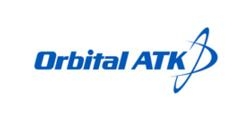Sun, Nov 05, 2017
Test Marks First Of Its Kind For 3-D Printed Motor Components
Orbital ATK has successfully completed a series of static test firings of a prototype tactical solid rocket motor built with critical metal components fabricated by additive manufacturing, commonly known as 3-D printing. These tests marked the first industry demonstration of a 3-D printed complex rocket nozzle and closure assembly in a tactical class rocket motor.

The motor was developed in partnership with the U.S. Army Aviation and Missile Research, Development and Engineering Center (AMRDEC) at Redstone Arsenal, Alabama. It incorporates leading-edge materials technologies designed to improve the performance and safety of a next generation anti-tank missile system. The prototype boost motors featured a high strength graphite epoxy composite case, a reduced sensitivity minimum signature rocket propellant, and 3-D printed components. Assembly and testing of the prototype motors was conducted at Orbital ATK’s Tactical Propulsion and Ordnance facility in Rocket Center, WV.
The test firings successfully validated boost motor and component performance across the full operational temperature range from -26 degrees to +145 degrees Fahrenheit, closely matching pre-test predictions and meeting all test objectives. The 3-D printed single piece high strength steel rocket nozzle and closure structure is expected to improve system affordability by significantly reducing parts count and manufacturing complexity of the current fielded system. In addition, the perforated rocket motor igniter housing and nozzle weatherseal used in the prototype tests were also additively manufactured.
“Orbital ATK has been very successful in taking additive manufacturing out of the academic world and incorporating it into our industrial design and operations,” said Pat Nolan, Vice President and General Manager for Orbital ATK’s Missile Products Division, part of the Defense Systems Group. “Our goal is not just to create industry firsts, but to create practical, reliable solutions that increase our products’ effectiveness while reducing the time it takes to get them into the field.”
As part of the Army’s Missile Science and Technology Enterprise objectives, Orbital ATK and AMRDEC developed the prototype motor to demonstrate and mature new and emerging materials technologies to enhance system effectiveness and achieve insensitive munitions compliance for next generation weapons that will protect soldiers, troops, civilians, and assets from greater threats in all conditions. Orbital ATK expects to continue this work for the next five years under the recently awarded Rocket Propulsion Technology II research and development contract.
(Source: Orbital ATK news release. Image provided)
More News
“These new aircraft strengthen our ability to respond quickly, train effectively and support communities nationwide. Textron Aviation has been a steadfast supporter in helpin>[...]
From 2011 (YouTube Edition): Rugged, Legendary, STOL Twin Makes A Comeback The de Havilland Twin Otter is an airplane with a long history, and it gained a reputation as a workhorse>[...]
A Wind Gust Lifted The Right Wing And The Airplane Turned To The Left Analysis: The pilot was departing from a 2,395-ft-long by 50-ft-wide turf runway. The pilot reported that afte>[...]
Have A Story That NEEDS To Be Featured On Aero-News? Here’s How To Submit A Story To Our Team Some of the greatest new stories ANN has ever covered have been submitted by our>[...]
Braking Action Advisories When tower controllers receive runway braking action reports which include the terms “medium," “poor," or “nil," or whenever weather con>[...]
 Aero-News: Quote of the Day (12.18.25)
Aero-News: Quote of the Day (12.18.25) Classic Aero-TV: Viking Twin Otter 400--Bringing the DHC-6 Back Into Production
Classic Aero-TV: Viking Twin Otter 400--Bringing the DHC-6 Back Into Production NTSB Final Report: Rans Employee Flying Club Rans S-6ES Coyote II
NTSB Final Report: Rans Employee Flying Club Rans S-6ES Coyote II ANN FAQ: Submit a News Story!
ANN FAQ: Submit a News Story! ANN's Daily Aero-Term (12.18.25): Braking Action Advisories
ANN's Daily Aero-Term (12.18.25): Braking Action Advisories



